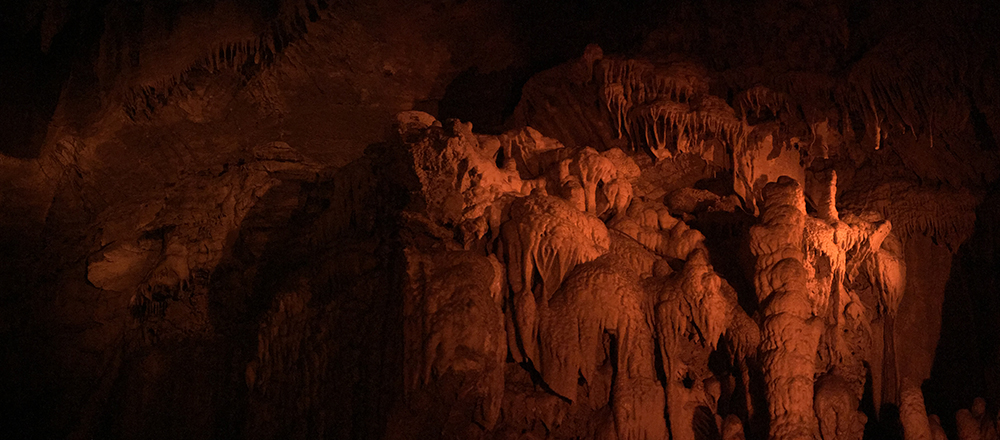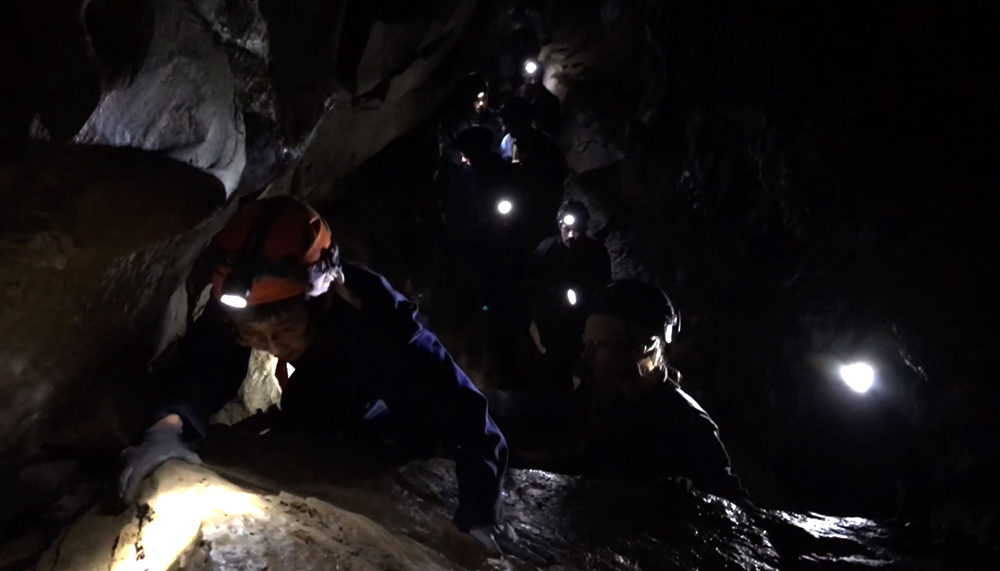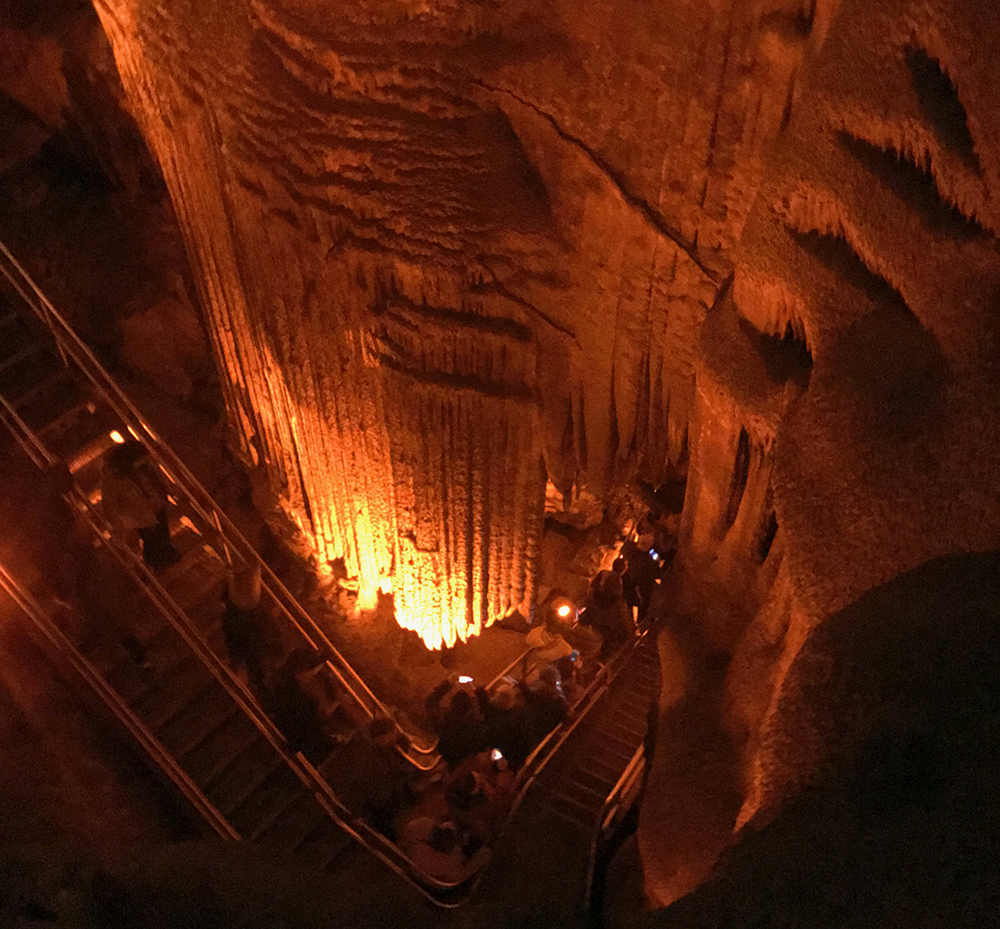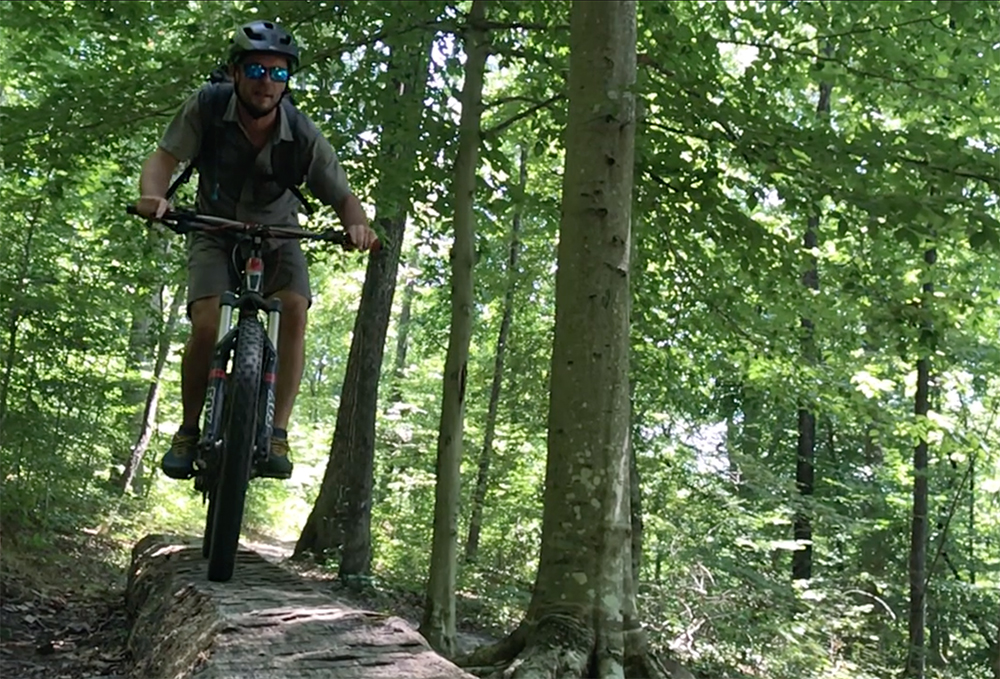Not all parks can advertise flowery mountain vistas, crystal clear lakes or deep scenic canyons. Kentucky’s Mammoth Cave can’t… In fact, early cave guide Stephen Bishop described this park in much different terms…
A park that is “grand, gloomy, and peculiar”…

Guide to Mammoth Cave
Mammoth Cave National Park
Mammoth Cave National Park is indeed a park all of its own. This is the longest known cave system in the world, by far! There are currently more than 400 miles of discovered passageways under the hills of southern Kentucky, and more are being found each year.
This cave system is so large, that if the world’s second and third longest caves were combined, the known passageways of Mammoth would still outdistance them by more than 100 miles!
Who knows how many more miles are yet to be discovered… perhaps there is a passageway to one of those famous bourbon distilleries that lie just to the north… I’ll take that tour please…

Where is Mammoth Cave?
Mammoth Cave is nestled deep in the hills of south central Kentucky, just over an hour north of Nashville, Tennessee. The park lies just to the west of Interstate 65, and can be accessed by a number of highways that arrive at one of the numerous park entrances.
Most visitors will arrive via the Mammoth Cave Parkway, which runs directly to the Mammoth Cave Visitor Center from the town of Park City, Kentucky, on I-65, while others will choose to exit further north in Cave City before heading west to join the Mammoth Cave Parkway.
Exploring Mammoth Cave
The park is relatively small at 53,000 acres, but the intricate landscape and number of various roads can make it seem a bit confusing. The main destination of course is the Mammoth Cave Visitor Center and the Historic Entrance.
Mammoth Cave
The Mammoth Cave Visitor Center and the Historic Entrance area is pretty much the center of activity in Mammoth. All cave tours originate here and tickets are purchased either online or at the visitor center. The Lodge at Mammoth Cave and the Woodland Cottages are found here, as well as the Mammoth Cave Campground.
The Historic Entrance to Mammoth Cave is located directly behind the visitor center. Some tours will enter the cave here, while others require a bus ride to other entrances. Such tours board busses just to the side of the visitor center.
The River Styx Spring Trail and the Green River Bluffs Trail, in addition to several others depart from the visitor center and provide easy access to wooded trails that lead toward the Green River.
Maple Springs
The Maple Springs area is about 6 miles away from the visitor center on the Green River Ferry Road. A trip on the Green River Ferry will provide a unique transportation experience and makes you fell special, as yours is usually the only car on the ferry.
Maple Springs is home to the park’s group campground and hiking trails from here lead into the more remote western section of the park. Most of the park’s 80 miles of trail are found in this area of the park and backpacking options provide a variety of routes in the park’s wooded hills.
To the east of the Green River Ferry Road is the Big Hollow Mountain Bike Trail system which has a North and South Loop, between which lies the Connector Trail. These trails are pretty fast and flowy, with a few log features thrown in for good measure. The trails hold nothing too difficult, but a few sections may be challenging for newcomers to the sport.
Houchins Ferry
This quiet retreat at the park’s western end holds a small riverside campground and a few old picnic tables. I like to camp here as it’s super quiet and out-of-the-way. Locals come down to fish at the river here, and it is a good spot to launch a canoe or kayak for a trip down the Green River.
There was once a ferry here, that operated much like the Green River Ferry, but that is long gone, and the area looks like it is nearly forgotten today.
Dennison Ferry
Dennison Ferry is a small, little-visited riverside area at the park’s east end. There are several picnic tables and a nice lawn. The area is a popular pull-out for canoes and kayaks floating the Green River.

Playtime in Mammoth Cave
This park has been welcoming guests to the caves for more than 200 years and today hosts more than 500,000 visitors a year, most of whom take the opportunity to venture underground.
There’s more to the park than dark, gloomy caves. There is a fine system of wooded hiking trails, plenty of quiet backroads that lead to cool old cemeteries and churches, a slow flowing river that offers relaxing paddling and fishing options, as well as a newly developed mountain biking trail that produces instant smiles.
Cave Tours
Tours range from the short and sweet Frozen Niagara Tour, a quarter-mile, a one and a quarter hour jaunt catering to those with limited mobility, to the six and one half hour Wild Cave Tour, which caters to adventure-seekers who really want to get their cave on. There exist a number of other trip options ranging widely in difficulty and length of time.
Please see the activities page for a description of these tours. You can purchase cave tour tickets online.
Hiking at Mammoth Cave
Above ground activities are accessible here as well, with the park lying in a beautifully wooded Appalachian landscape. The park offers more than 80 miles of hiking trails and provides opportunities for equestrian and biking enthusiasts too.

Paddling in Mammoth
Those who wish to take to the water may be surprised to learn that the Green and the Nolin Rivers provide more than 30 miles of canoeing or kayaking ability. While on the rivers, cast for bass, bluegill, perch, crappie and catfish or enjoy backcountry camping along the riverbank in the quiet eastern woods.
Mountain Biking in Mammoth
There is a nice mountain bike trail in the park, and honestly it’s one of the nicest trails that Park Junkie has ridden in a national park. The idea of mountain bikes in parks is slowly gaining traction, but Mammoth seems to be slightly ahead of the curve here. The trail was actually fun, and even had a few log and rock features to offer a small challenge to the more skilled rider.

Formation of Mammoth Cave
Formation of these caves has taken some time, more than 350 million years by most estimates.
Long, long ago, lying under a warm shallow sea, limestone deposits from sea-dwelling creatures formed what became the somewhat easily dissolvable, 600′ thick karst nucleus of the cave. Eons later, sandstone, deposited by rivers flowing from the Appalachian Mountains, formed a shield above the limestone that protected the slow forming caverns below from too much water flow.
Evident in the park’s above ground features are many sinkholes, often filled with water. These sinkholes are sites where the sandstone caprock collapsed and these holes allow slow drainage into the earth as the water finds small fissures through which it percolates downward, becoming contaminated with carbon dioxide that exists naturally in the soil. Slowly this union forms carbonic acid which in turn, perpetually eats away at the limestone found hundreds of feet below. This process continues today.
Park Junkie Verdict
Mammoth Caves National Park is not the easiest park to access. It’s sort of out there and not really close to anything, but it offers the aspiring park junkie an excuse to tour through rural Kentucky… so it has that going for it… which is nice.
The cave tours are fun, and offer a unique opportunity to access the passages of the world’s longest cave system. My last visit presented the opportunity to take the Wild Cave Tour, which was absolutely incredible. I found the tour to be well-managed and a great way to see some rarely visited passages.
All in all, this is a cool area. The underground chasms combined with tranquil walks and outdoor recreation here, make it a must see and a unique experience in the parks.
See ya there…
Guide to Mammoth Cave
Relevant Links
National Park Guides

All content found on Park Junkie is meant solely for entertainment purposes and is the copyrighted property of Park Junkie Productions. Unauthorized reproduction is prohibited without the express written consent of Park Junkie Productions.
YOU CAN DIE. Activities pursued within National Park boundaries hold inherent dangers. You are solely responsible for your safety in the outdoors. Park Junkie accepts no responsibility for actions that result in inconveniences, injury or death.
This site is not affiliated with the National Park Service, or any particular park.
